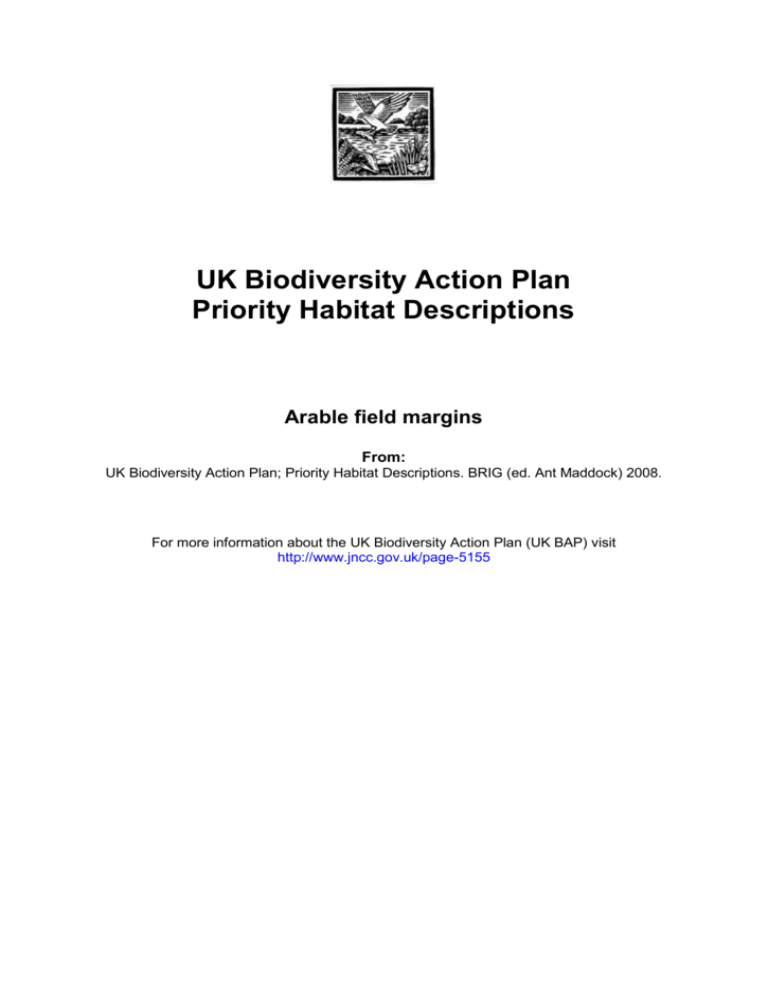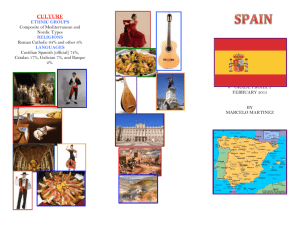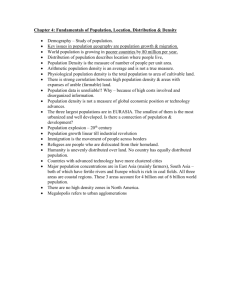Arable field margins
advertisement

UK Biodiversity Action Plan Priority Habitat Descriptions Arable field margins From: UK Biodiversity Action Plan; Priority Habitat Descriptions. BRIG (ed. Ant Maddock) 2008. For more information about the UK Biodiversity Action Plan (UK BAP) visit http://www.jncc.gov.uk/page-5155 Arable Field Margins The definition of this priority habitat has been amended from the pre-existing Habitat Action Plan for cereal field margins (http://www.ukbap.org.uk/UKPlans.aspx?ID=8). Arable field margins are herbaceous strips or blocks around arable fields that are managed specifically to provide benefits for wildlife. The arable field must be in a crop rotation which includes an arable crop, even if in certain years the field is in temporary grass, set-aside or fallow. Arable field margins are usually sited on the outer 2-12m margin of the arable field, although when planted as blocks they occasionally extend further into the field centre. In general terms, the physical limits of the arable field margin priority habitat are defined by the extent of any management undertaken specifically to benefit wildlife. Single payment cross-compliance margins are considered as part of the boundary habitat and are not part of the arable field margin habitat. The outer edge refers to the edge closest to the field boundary. Where there is a living field boundary (hedgerow or line of trees), any herbaceous vegetation within 2m from the centre of the living boundary is considered to be part of the living boundary habitat. The arable field margin outer boundary starts at the edge of this boundary habitat. Where the boundary is a ditch or other water body, any herbaceous vegetation within 2m from the centre of the water body (or one metre from the edge of the water body if this extends further into the field) is considered to be part of the boundary habitat. The arable field margin outer boundary starts at the edge of this boundary habitat. Where the boundary is non-living (e.g. a fence or wall), the outer edge is defined by the extent of any management undertaken specifically to benefit wildlife. Where the habitat comprises a block of, for example, wild bird seed mixture, it has only an outer edge. The inner edge refers to the edge closest to the centre of the field. In all cases, the inner edge is defined by the extent of any management undertaken specifically to benefit wildlife. The following margin types are included: Cultivated, low-input margins. These are areas within arable fields that are cultivated periodically, usually annually or biennially, but are not sprayed with spring/summer insecticides and not normally sprayed with herbicides (except for the control of injurious weeds or problem grasses such as creeping thistle, black grass, sterile brome or wild oat). Cultivated, low-input margins include conservation headlands and land managed specifically to create habitat for annual arable plants. Margins sown to provide seed for wild birds. These are margins or blocks sown with plants that are allowed to set seed and which remain in place over the winter. They may be sown with cereals and/or small-seeded broad-leaved plants or grasses but areas sown with maize are excluded as they are of lower value for wild birds. Margins sown with wild flowers or agricultural legumes and managed to allow flowering to provide pollen and nectar resources for invertebrates. Margins providing permanent, grass strips with mixtures of tussocky and fine-leaved grasses. Areas of grass established as cross compliance requirements (see below) are excluded from this definition, but all other strips of grassland created by sowing or natural regeneration, such as field margins or beetle banks, are included. Separate targets will be set for each margin-type, reflecting the varying priorities for conservation action. The following margin types are excluded: Although set-aside, biomass and organic crops can have incidental benefits for wildlife in arable fields, these areas are not managed specifically for wildlife and are therefore excluded from the definition. Margins established as cross compliance requirements under the Single Payment Scheme (in England and Scotland) or as mandatory requirements of an Entry-Level Agri-environment Scheme (in Wales and likely in Northern Ireland) are excluded. These margins, where present, would be included as part of the priority hedgerow habitat, where put in place to protect the hedgerow. Whole-field options such as over-wintered stubbles (with or without a fallow) and in-field options such as skylark plots are currently excluded from the definition of priority habitat, although their value for wildlife is acknowledged and their status will be reviewed in due course. Discussions to develop a more detailed definition continue in 2008 and may include: Areas of arable land that meet one or more of the following criteria: Hosting a Nationally Scarce or Rare arable plant species. Having a mean within-crop plant species richness of (say) >18 per 100m square (upper quartile, CS 2000 arable field margin plots). Regularly supporting a breeding population of the following crop-nesting bird species with a restricted distribution: corn bunting, reed bunting or lapwing. Regularly supporting a breeding population of the following bird species with a restricted distribution which nest in hedges or grass margins and feed within the arable field: grey partridge, tree sparrow, turtle dove. Used for foraging by any of the following bumblebee species: Shrill Carder bee, Common Carder bee, Large Garden Bumblebee, Great Yellow Bumblebee (Scotland).







